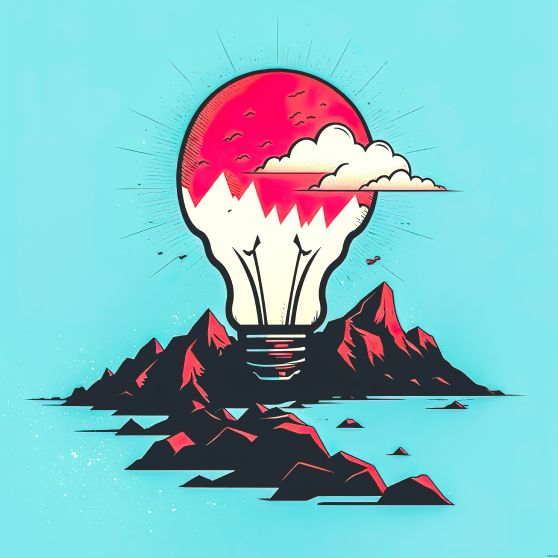"B2B loyalty programs? Do we really need to bother with those?"
In a world where every transaction is a fleeting encounter, investing in a well-structured B2B loyalty program can be a game changer. By fostering loyalty among your influencers, you can turn a simple partnership into a thriving ecosystem that benefits everyone involved. After all, loyalty isn’t just about rewards; it’s about building a network of trusted allies who champion your brand, ensuring long-term success. So, before dismissing the importance of B2B loyalty programs, consider the strategic advantage of cultivating lasting relationships with those who help your business shine.
A B2B loyalty program for retail is a rewards system designed specifically for businesses that sell products or services to other companies within the retail industry. These programs focus on building stronger relationships with brand advocates such as distributors, resellers, plumbers, and electricians by offering incentives like discounts, points, or exclusive benefits based on their purchasing behaviour. B2B loyalty programs encourage vital partners to promote and sell the brand's products more effectively.
Characteristics and Challenges of B2B Loyalty Programs:
1. Complex decision-making with multiple stakeholders
3. High-value, customised transactions
5. Niche audience with specific needs
7. Evolving technology demands and buyer expectations
Making sure that the B2B loyalty program you are putting together works or not is a stressful process. Companies sometimes need to understand the difference between B2B loyalty programs and B2C loyalty programs.
Benefits of B2B Loyalty Programs:
2. Higher Customer Lifetime Value (CLV): Loyal clients spend more over time, boosting their lifetime value. A loyalty program can facilitate opportunities to introduce clients to additional products or services.
4. Competitive Advantage: A well-structured loyalty program can differentiate your business from competitors, providing a unique selling point. You can attract and retain more clients to capture a larger market share.
6. Boosted Sales and Revenue: Discounts, rewards, and exclusive offers encourage customers to make more frequent or more significant purchases. Satisfied, loyal clients are more likely to refer others, driving new business through word-of-mouth.
8. Increased Engagement and Loyalty Program Participation: Well-designed programs encourage active participation through rewards, points, and exclusive offers. Tailored rewards and recognition can enhance customer experience and satisfaction.
10. Strategic Growth Opportunities: Insights from loyalty programs can identify opportunities for market expansion or new product lines. Data-driven decisions and improved customer relationships can drive strategic growth initiatives and innovations.
1. Channel loyalty programs aim to reward and incentivise every effort that distributors, resellers, and other channel partners make. The programs also aim to build closer ties between the company and its channel partners to drive increased sales, market penetration, and brand loyalty.
Why Choose Channelplay?
1. Customised Rewards Programs: Channelplay designs loyalty programs that reward, based on the requirements of retail partners. These could be in the form of discounts, rebates, access to new products before their launch, or promotional support—anything that would help increase sales and drive more engagement.
3. Data Analytics for Better Decision-Making: By analytics, channel play gets insights into the loyalty program, making retail businesses realize their partners better. This data will be very important in fine-tuning the strategies, optimising inventory, and tailoring marketing efforts that meet the needs of different retail partners.
1. Automation: Use technology to automate key elements of the program, such as tracking partner activities, reward distribution, and communication management. This will lighten the administrative load and increase consistency in the program's delivery.
3. Design easy-to-use platforms, including partner portals or mobile applications, through which participants may track progress, redeem rewards, and engage in the program. Ensure a seamless user experience for every partner as this is critical for engagement.
1. Track KPIs: Sales growth, partner retention, and participation levels. By regularly reviewing these metrics, understand where improvements are needed in the program.
3. Reporting: Download detailed reports to interpret the program's impact and make data-driven decisions. These reports should provide insights into what is working well and what needs refinement.
5. Sales Uplift: This is the increase in sales directly due to the loyalty program. It helps determine the monetary worth of a program.
7. Cost Per Acquisition: Acquisition versus retention costs of loyal partners to the revenues they generate. Use this metric to drive home the question of whether the program is profitable.
Examples of Loyalty Program Success Stories
1. Channelplay's Loyalty Transformation for Crompton: Channelplay transformed Crompton's loyalty program, boosting active member rates through advanced technology and deep market understanding. By engaging over 4000 plumbers in March (up from 200 in December), Channelplay elevated loyalty and brand affinity. Their dedicated team of 35 Field Marketing Representatives (FMRs) conducted targeted initiatives like Chai Pe Charcha and Saathi meets, driving app adoption and product scanning. This strategic partnership not only increased product awareness and technical support but also achieved Crompton's visual merchandising targets for FY-22-23, setting a new benchmark for loyalty programs in Indian retail in the industry.
With over 23,000 registered members and 11,000 active participants, the program achieved impressive results: 12,340 redemptions totaling 271,567,241 points, valued at over Rs. 5 crores. Channelplay's innovative approach and mobile app strengthened Greaves Cotton's bonds with mechanics, driving sales and customer satisfaction to unprecedented levels.
1. Consumer Goods
2. Technology
3. Manufacturing
4. Finance
5. Healthcare and Pharmaceuticals
6. Automotive
7. Construction and Real Estate
8. Telecommunications
9. Hospitality
The future of B2B loyalty programs
1. Personalisation
2. Integration with Technology
3. Enhanced Customer Experience
4. Increased Focus on Value
5. Sustainability and Corporate Responsibility
6. Flexible and Scalable Models
7. Enhanced Analytics and Reporting
8. Integration with Other Business Functions
Overall, the future of B2B loyalty programs will focus on creating more personalised, valuable, and integrated experiences for business clients, leveraging technology and data to drive deeper and more meaningful relationships.






